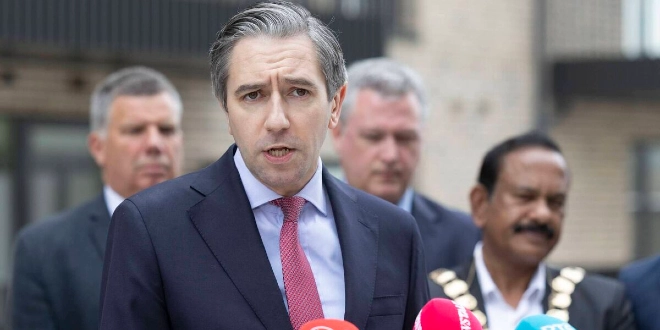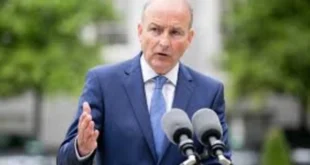Tánaiste and Minister for Foreign Affairs and Trade Simon Harris has welcomed the new EU–US trade framework announced today, describing it as a significant step in providing certainty for Irish exporters. The agreement confirms a single 15% tariff rate on EU goods entering the United States, including pharmaceuticals and semiconductors—sectors previously at risk of much higher duties under US Section 232 investigations.
“Today’s outcome is an important shield for Irish exporters,” Mr Harris said, adding that the deal prevents the possibility of severe tariff hikes that could have hurt strategically important industries.
Key Features of the Agreement
The three-and-a-half-page joint statement sets out several commitments from both Washington and Brussels:
- 15% tariff ceiling: A uniform rate applied to EU goods, including cars, lumber, pharmaceuticals, and semiconductors.
- Carve-outs: “Zero for zero” tariffs for aircraft and aircraft parts, with discussions continuing on exemptions for generic pharmaceuticals and chemicals.
- Future reductions possible: The deal leaves room for additional tariff cuts on strategically important products.
- Reciprocal commitments: The EU will remove tariffs on all US industrial goods and expand preferential access for US seafood and agricultural products.
For European carmakers, currently burdened by 27.5% tariffs in the US, relief could arrive within weeks once Brussels introduces the necessary legislation to reduce tariffs on American goods.
US President Donald Trump and European Commission President Ursula von der Leyen unveiled the framework on 27 July during talks in Scotland. Both leaders have since hailed the agreement as historic, emphasizing its role in strengthening transatlantic ties at a time of broader geopolitical tensions, including the ongoing war in Ukraine.
Strategic and Economic Implications
The deal goes beyond tariffs. The EU confirmed plans to procure $750 billion in US energy exports, including liquefied natural gas, oil, and nuclear products, alongside $40 billion in AI chips. In return, European firms pledged an additional $600 billion in investment across strategic US industries by 2028.
Both sides also committed to:
- tackling digital trade barriers, with the EU agreeing not to impose network usage fees,
- ring-fencing steel and aluminum markets to prevent global overcapacity, and
- negotiating rules of origin to ensure benefits remain confined to EU and US producers.
European Commission spokesperson Olof Gill underlined that the 15% tariff level—particularly on pharmaceuticals—was a guaranteed commitment, offering “security and stability” for exporters.
Ireland’s Position and Business Reactions
While welcoming the certainty, Mr Harris noted that higher tariffs still pose challenges for Irish companies, particularly in a year when many sectors are already under financial pressure. He said Ireland must continue to improve competitiveness, attract investment, and diversify export markets. A new Market Diversification Action Plan will be published next week to support these efforts.
Business groups offered mixed reactions:
- Ibec: Executive Director Fergal O’Brien acknowledged the clarity but warned that some low-margin sectors remain under severe strain. He called for ongoing government and EU support, alongside more “zero-for-zero” agreements.
- Drinks Ireland and Irish Whiskey Association: Expressed disappointment that spirits and alcohol were not restored to zero-tariff status. Director Cormac Healy described this as a missed opportunity, stressing that the 15% levy on Irish whiskey—worth €2.1 billion in exports—has forced some distilleries to shut down. He urged negotiators to press for swift changes and called for government support measures.
A Stabilised but Challenging Trade Relationship
The new framework is being framed as a stabilising measure after months of uncertainty. It sets predictable terms for exporters on both sides of the Atlantic, while still leaving room for future tariff cuts and sector-specific deals. However, for industries like Irish whiskey and other small-margin exporters, significant challenges remain.
As Harris put it, while the agreement brings “certainty at last,” Ireland and the wider EU must remain focused on competitiveness and innovation to weather the pressures of this evolving trade environment.
 The Daily Star Ireland
The Daily Star Ireland

